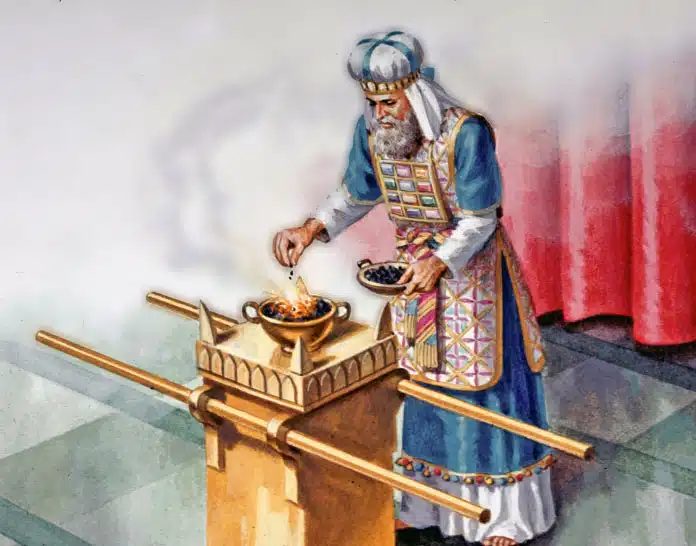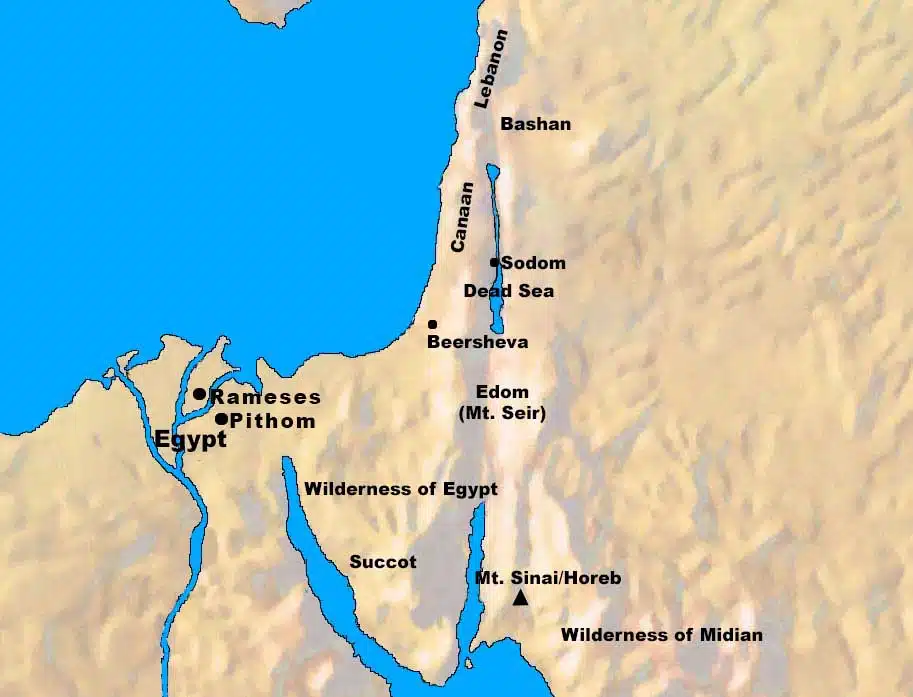The LORD describes how the altar of incense was to be built. The rings and the poles, used to carry the altar of incense, are also described here. The account of its construction is in Exodus 37:25 – 29.
In addition to the altar of burnt offering described in Exodus 27:1 – 2, another altar was needed. This was to be an altar used as a place for burning incense. Verses 1 – 3 describe how it was to be made:
The Israelites were to make it of acacia wood. Acacia wood was a hard and durable wood with a beautiful fine grain, which darkens as it ages. It is also called the “shittah tree” (Isaiah 41:19). This was the same material as was used to make the tabernacle itself (Exodus 25:8 – 10, 26:15) and also other tabernacle furniture (Exodus 27:1). Its length shall be a cubit, and its width a cubit. A cubit was approximately eighteen inches (or 45.7 centimeters) in length. Since its length and width were the same, it shall be square.

Its height shall be two cubits, making it about three feet (one meter) tall.
Its horns shall be of one piece with it. This is similar to the burnt offering altar, which also had horns on each of the four corners (Exodus 27:2).
The craftsmen were to overlay it with pure gold, its top and its sides all around, and its horns; and you shall make a gold molding all around for it. Overlaying this altar with gold indicated how important this item was. This is different from the burnt offering altar which was overlaid with bronze (Exodus 27:2), a less precious metal. Part of the reason the burnt offering altar was of bronze might have had to do with its larger size, and the practicality of transporting it. The incense being burned represented prayers going up to the LORD, which is given prominence.
In addition to the altar itself, they were to make two gold rings for it and place them under its molding. The rings were placed on its two side walls—on opposite sides, meaning that they were to place two rings on one side panel and two rings on the other side panel. The rings served as holders for poles with which to carry it.
Like the altar itself, the poles were made of acacia wood. And like the altar, they were to overlay them with gold. Everything had to be portable, so the tabernacle and all its features could be relocated.
Biblical Text:
1 “Moreover, you shall make an altar as a place for burning incense; you shall make it of acacia wood. 2 Its length shall be a cubit, and its width a cubit, it shall be square, and its height shall be two cubits; its horns shall be of one piece with it. 3 You shall overlay it with pure gold, its top and its sides all around, and its horns; and you shall make a gold molding all around for it. 4 You shall make two gold rings for it under its molding; you shall make them on its two side walls—on opposite sides—and they shall be holders for poles with which to carry it. 5 You shall make the poles of acacia wood and overlay them with gold.
Check out our other commentaries:
-
Hebrews 13:17-19 meaning
We ought to submit to those in leadership over us. ...... -
Matthew 18:21-22 meaning
Peter asks Jesus where he should set the limits of his mercy toward his brother and suggested that he should forgive him up to seven...... -
Leviticus 23:26-32 meaning
God declares the Day of Atonement, (“Yom Kippur” in Hebrew) to be one of His appointed times...... -
Hebrews 10:1-4 meaning
The law is not sufficient and animal blood doesn’t completely atone for sin. They served as ongoing reminders of sin....... -
Romans 2:1-2 meaning
When we judge and condemn others for sins that we are also committing, God sees that and will judge us accordingly.......



